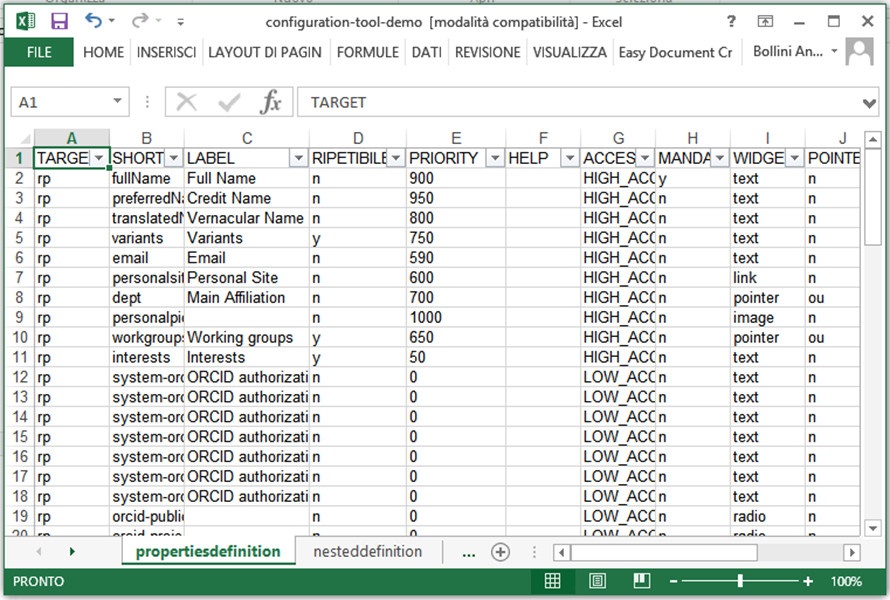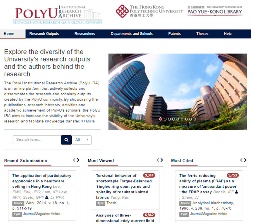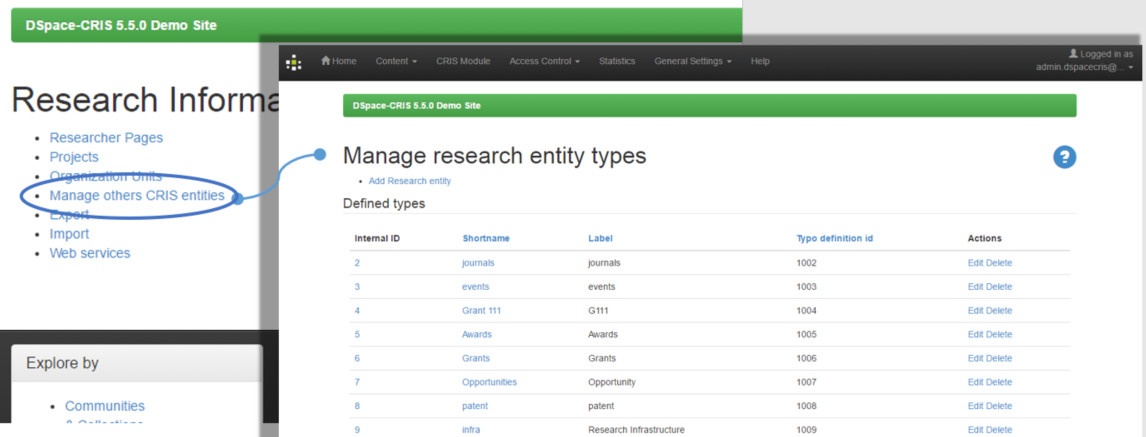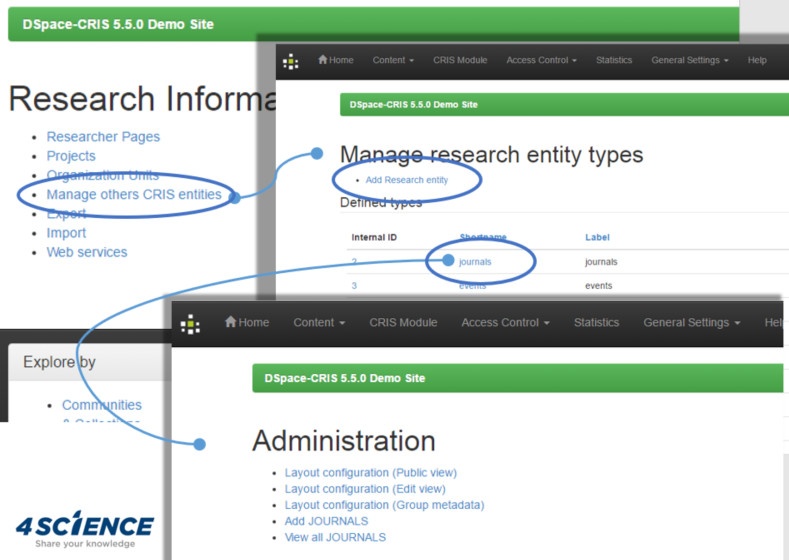
DSpace-CRIS extends to all the CRIS entities the functionalities that the basic DSpace repository offers for publications.
One of its main characteristics is the flexibility of the data model. DSpace-CRIS is configured so to allow modifications either by importing XLS files

or directly via the User Interface (XLS files export is of course allowed), as better explained below.
1) Pre-configured entities
All the main CRIS entities are already configured and available: researchers and groups, departments and organizational units, laboratories and infrastructures, projects and collaborations, contracts and events, patents, awards, etc.
As an example, the screenshot below represents the home page of the DSpace-CRIS installation at The Hong Kong Polytechnic University. On the top menu there are the CRIS entities that the library decided to manage: Research Outputs, Researchs, Departments and Schools, Patents and Theses.

2) Customization of entities
There’s a dedicated administrative UI for data model definition which allows the management and creation of 1st level entities (researchers, orgunits/groups, projects):

The same approach is adopted to define new object types and to manage 2nd level CRIS entities (prizes, awards, equipment, laboratories)


3) Links between one or more entities
This is one of the most important features of DSpace-CRIS that allows the creation of links between one or more 1st and 2nd level entities. Doing so facilitates the contextualization of information: you can link not only a researcher to her publications, but to her organisational units, teams, events, etc.